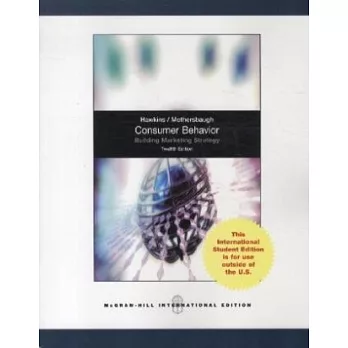部落客隱喻與認知流行趨勢
 |
看完部落客隱喻與認知流行趨勢,總覺得突飛猛進能擁抱全世界
推薦大家一本語言學習好書部落客隱喻與認知流行趨勢全書的內容大意
看完後有一種說不出的感動,真的不錯,內容精彩!
部落客隱喻與認知流行趨勢曾在博客來 網路書店造成搶購熱潮。
總而言之,它的評價很高,在網路上很夯,人氣蠻不錯,購買也很便利,很值得納入購物車,不需要特地跑到外面找。
博客來,博客來網路書店,博客來網路書局,博客來書店,博客來網路書店歡迎您
商品訊息功能:
內容簡介: 長期以來,隱喻只被認為是一種譬喻法,一種文學上的修辭技巧,然而這樣的想法,在仔細觀察生活週遭的語言使用後,很快就會被推翻。隱喻其實並不只是為潤飾而存在,它大量的存在於人類言談及思想中;我們習以為常的語言,其實反映了人類如何了解自己的語言與經驗。
隱喻是人類概念系統的一部分,許多我們思考的方式,我們所經驗的事物都是隱喻的某一種表徵;我們思考以及了解這個世界的方式,其實在某個層面上受到了限制,只是我們往往無所覺。本課程以日常生博客來活的語言現象為基礎,藉由探索「隱喻」的本質與應用,帶領讀者一探人類思維模式的靈活運用,探索思想認知之奧秘,以及文化對人類思維模式的影響。課程簡介博客來網路書店一、課程名稱:隱喻與認知二、所屬領域:人文博客來網路書局三、學分數:2博客來書店四、任課教師:蘇以文五、課程說明:(一)本課程開授目的:本計畫擬透過開設通識課程的方式,以跨學科思考的方式帶領學生研討此經典之內容。本計畫擬由日常生活的語言現象為基礎,逐步帶領學生,進入人類思維模式及認知科學的世界。在1980所出版的Metaphors We Live By, Lakoff and Johnson為認知語言學的研究奠定了里程碑。我們希望藉此能使學生瞭解隱喻及思想的本質,及瞭解其在語言學及認知科學其他研究領域中的角色;使學生能瞭解語言及思想的譬喻性,及文化對人類思維模式的影響及互動關係。
(二)本課程共列11個講授單元,每一講授單元包括下列各項:
1. 講授內容摘要
2. 閱讀作業及思考問題
3. 參考讀物
4. 參考英語語料六、教材:
Lakoff, G. and M. Johnson 1980. Metaphors We Live By. Chicago: University of Chicago Press.七、課程進度
第一講?隱喻與思維的本質
Ch1Concepts We Live By
Ch2The Systematicity of Metaphorical Concepts
Ch3Metaphorical Systematicity: Highlighting and Hiding
第二講?概念的方位性與文化思維
Ch4Orientational Metaphors
Ch5Metaphor and Cultural Coherence
第三講對實體的感知與思維
Ch6 Ontological Metaphors
Ch7 Personification
Ch8 Metonymy
第四講概念系統的一致性
Ch9 Challenges to Metaphorical Coherence
Ch10? Some Further Examples
Ch11? The Partial Nature of Metaphorical Structuring
第五講結構性隱喻、譬喻性思維、一般性思維及其經驗基礎
Ch12How Is Our Conceptual System Grounded?
Ch13The Grounding of Structural Metaphors
Ch14Causation: Partly Emergent and Partly Metaphorical
第六講概念性隱喻、思維建構及經驗整體性
Ch15The Coherent Structuring of Experience
Ch16Metaphorical Coherence
Ch17Complex Coherence across Metaphors
第七講概念結構及基礎理論
Ch18Some Consequences for Theories of Conceptual Structure
第八講隱喻、思維與意義
Ch19Definition and Understanding
Ch20How Metaphor Can Give Meaning to Form
Ch21New Meaning
第九講意義與真實
Ch22The Creation of Similarity
Ch23Metaphor, Truth, and Action
Ch24Truth
第十講語言:客觀還是主觀?
Ch25The Myths of Objectivism and Subjectivism
Ch26The Myth of Objectivism in Western Philosophy and Linguistics
Ch27How Metaphor Reveals the Limitations of the Myth of Objectivism
Ch28Some Inadequacies of the Myth of Subjectivism
第十一講結語:語言與思維的經驗基礎
Ch29The Experientialist Alternative: Giving New Meaning to the Old Myths
Ch30Understanding八? 基本參考書
Lakoff, G. and M. Johnson 1980. Metaphors We Live By. Chicago: University of Chicago Press.九? 課外閱讀參考書目
.Ahrens, Kathleen. 2001. When love is not digested: Underlying reasons for source to target domain pairing in the Contemporary Theory of Metaphor. In the Proceedings of the First Cognitive Linguistics Conference, Cheng-Chi University, Taiwan.
.Black, Max. 1962. Models and Metaphors. Ithaca, N.Y.: Cornell University Press.
.Bolinger, Dwight. 1977. Meaning and Form. London: Longman.
.Borkin, Ann. 1985. Problems in Form and Function. Norwood, NJ: Ablex.
.Bybee, Joan. 1985. Morphology. Amsterdam: John Benjamins.
.Cienki, Alan (1999). Metaphors and cultural models as profiles and bases. In Raymond W. Gibbs, Jr., and Gerard J. Steen (eds.), Metaphor in Cognitive Linguistics: Selected Papers from the Fifth International Cognitive Linguistics Conference, 189-203. Amsterdam/Philadelphia.
.Cooper, William E., and John Robert Ross. 1975. World order. In Robin E. Grossman, L. James San, and Timothy J. Vance, (eds.), Functionalism. Chicago: Chicago Linguistic Society.
.Dahl, Oyvind. 1995. When the future comes from behind: Malagasy and other time concepts and some consequences for communication. International Journal of Intercultural Relations 19:2, 197-210.
.Davidson, Donald. 1978. What metaphors mean. Critical Inquiry 5:1, 31-47.
.Frege, Gottlob. 1966. On Sense and Reference. In P. Geach and M. Black, (eds.), Translation from the Philosophical Writings of Gottlob Frege. Oxford: Balckwell.
.Gallagher, Shaun. 1995. Body schema and intentionality. In Jose Bermedez, Noami Eilan, Anthony Marcel (eds.), The Body and the Self, 225-244. Cambridge, MA: MIT Press.
.Grice, H. P. 1957. Meaning. Philosophical Review 66:377-88.
.Hill, Clifford A. 1982. Up/down, front/back, left/right: A constrastive study of Hausa and English In J. Weissenbord and W. Klein (eds.), Here and There: Cross-linguistic Studies on Deixis and Demonstration, 13-42. Amsterdam: John Benjamins.
.Jackendoff, Ray S. 1983. Semantics and Cognition-Chapter 1: Semantic Structure and Conceptual Structure. Cambridge, MA: MIT press, 3-22.
.──. 1990. Semantic Structures-Chapter 1: Overview of Conceptual Semantics. Cambridge: MIT Press, 7-41.
.Johnson, Mark. 1987. The Body in the Mind: The Bodily Basis of Meaning, Imagination, and Reason. Chicago: University of Chicago Press.
.Klein, Harriet. 1987. The future precedes the past: Time in Toba In Word, vol. 38:3.
.Koffka, Kurt. 1935. Principles of Gestalt Psychology. London: Lund Humphries.
.Kovecses, Zoltan. 1986. Metaphors of Anger, Pride, and Love. A Lexical Approach to the Structure of Concepts. Amsterdam: John Benjamins.
.──. 1990. Emotion Concepts. Berlin: Springer-Verlag.
.Lakoff, George. 1972. Linguistics and Natural Logic. In Donald Davidson and Gilbert Harman, (eds.), Semantics of Natural Language. Dordrecht: D. Reidel.
.──. 1987. Women, Fire and Dangerous Things. Chicago:? University of Chicago Press.
.──. 1990. The Invariance Hypothesis: Is Abstract Reason Based on Image-Schemase Cognitive Linguistics 1:1, 39-74.
.──. 1993. The Contemporary Theory of Metaphor. In A. Ortony, (ed.), Metaphor and Thought. 2nd. ed. Cambridge: Cambridge University Press.
.──. 1996. Moral Politics: What Conservatives Know That Liberals Don't. Chicago: University of Chicago Press.
.Lakoff, George, and Mark Johnson. 1981. The metaphorical structure of the human conceptual system. In D.A. Norman, (ed.), Perspectives on Cognitive Science, 193-206. Norwood, NJ: Ablex.
.Lakoff, George, and Mark Johnson. 1999. Philosophy in the Flesh: The Embodied Mind and Its Challenge to Western Thought. New York: Basic Books.
.Lakoff, George and Mark Turner. 1989. More than Cool Reason: A Field Guide to Poetic Metaphors. Chicago: Chicago Press.
.Lakoff, George, and Rafael Nueez. 2000. Where Mathematics Comes From: How the Embodied Mind Brings Mathematics into Being. New York: Basic Books.
.Montague, Richard. 1974. Formal Philosophy. New Haven: Yale University Press.
.Richards, I. A. 1936. The Philosophy of Rhetoric. London: Oxford University Press.
.Rosch, Eleanor. 1977. Human categorization. In N. Warren, (ed.), Advances in Cross-cultural Psychology. New York: Academic Press.
.Su, Lily I-wen. 1999a. To “run” a marriage: Conceptualization of marriage in current Chinese. AISB’99 Workshop on Metaphor, Artificial Intelligence & Cognition. Edinburgh University.
.──. 1999b. Thought as food: Conceptual metaphors? in Chinese. Working Papers in Linguistic, Vol. 2 (Dec 1999), 199-224. National Taiwan University.
.──.? 1999c. Metaphorical extension and lexical meaning. The 13th Pacific Asia Conference on Language, Information, and Computation. Taipei.
.──. 2002a. What can metaphor tell us about culture?”Language and Linguistics 3(3): 589-614, Taipei: Academia Sinica.
.── . 2002b. What can metaphor tell us about conceptuali- zation and culture? Proceedings of the Symposium on Selected NSC Projects on General Linguistics 1998-2000. National Taiwan University, Taipei.
.Turner, Mark. 1987. Death Is the Mother of Beauty: Mind, Metaphor, Criticism. Chicago: University of Chicago Press.
.──. 1996. The Literary Mind. New York: Oxford University Press.
.Vosniadou, Stella. and Andrew. Ortony. 1989. Similarity and analogical reasoning: A synthesis. In Stella Vosniadon and Andrew Ortony, (eds.), Similarity and Analogical Reasoning. Cambridge: Cambridge University Press.
.Yu, Ning. 2001. What does our face mean to use Pragmatics & Cognition 9:1, 1–36.
.Yu, Ning. 2002. Body and emotion: Body parts in Chinese expression of emotion. In Nick Enfield and Anna Wierzbicka (eds.) The Body in Description of Emotion: Cross-Linguistic Studies, special issue of Pragmatics and Cognition 10(1/2): 341–367作者簡介蘇以文教授乃夏威夷大學語言學博士,現任國立臺灣大學語言學研究所教授。目前的研究重點為言談分析、語用學及認知語言學,尤重人類思維在語言現象中的體現及其與文化之間的相關性。
訂價耍心機:9種讓顧客心甘情願掏錢的價格制定術 | 客戶關係管理 | 運動廣告的感性訴求──消費者購買動機之研究以台北市為例 | |||
引爆需求:讓顧客無可救藥愛上你的6個祕密 | 拆穿凱莉包的誘惑:107招破解消費陷阱的聰明 Shopping 術 | Consumer Behavior:Building Marketing Strategy (第12版) |
- 作者: 蘇以文 新功能介紹
- 出版社:國立臺灣大學出版中心 新功能介紹
- 出版日期:2005/03/10
- 語言:繁體中文
部落客隱喻與認知流行趨勢
 |
九星法相:旗門之風生水起2 | 鬼門十三針:旗門之風生水起1 | ||
會員登入 | 血色情人(2)變態男人與他的姐妹 完結篇 | ||
百萬殺人實驗 | 我的天師女友(8)涅槃之戰 |
部落客隱喻與認知流行趨勢推薦,部落客隱喻與認知流行趨勢討論,部落客隱喻與認知流行趨勢比較評比,部落客隱喻與認知流行趨勢開箱文,部落客隱喻與認知流行趨勢部落客
部落客隱喻與認知流行趨勢那裡買,部落客隱喻與認知流行趨勢價格,部落客隱喻與認知流行趨勢特賣會,部落客隱喻與認知流行趨勢評比,部落客隱喻與認知流行趨勢部落客 推薦
內容來自YAHOO新聞
辦公室放鼓 林昶佐:打造人性化的工作環境
【on.cc東網專訊】時代力量立委林昶佐立法院研究室被爆料在下班後傳出鼓聲吵到人,還被前立委蔡正元在臉書上批評,要林昶佐「把時間拿來好好學習立法」。林昶佐今天也在臉書回應此事,他說,被媒體問及此事有點驚訝,這誤會大了,因為他認為勞動不是在高壓下工作,辦公室內有電子鼓、吉他、槓鈴,可以讓助理在工作之餘調劑身心,是在打造人性化的工作環境。
林昶佐今天也向媒體表示,會增加辦公室的隔音設備,不要去吵到相鄰的其他委員辦公室。
林昶佐在臉書中指出:「我一直認為,勞動,不是在高壓下工作,而是要讓人覺得有趣、有幹勁!辦公空間融入適當的休閒興趣,同仁才會有更好的工作品質和效率,如同Google辦公室的概念。我把這樣的理念帶進國會,鼓勵助理們將辦公室帶入自己的喜好跟休閒,現在辦公室不只有電子鼓、吉他、啞鈴、單槓等,可以在工作之餘調劑身心,助理們上班時間也可選播喜歡的音樂。這樣的效果確實也讓助理們每天心情愉快,熱情有效率的從事工作,與我的問政要求良好配合。」
他強調,雖然鼓勵優質的工作環境,但仍不能干擾鄰居。「目前沒接到其他委員辦公室跟我們反映,我們會保持與大家良好的互動,同仁們也以不影響到鄰居們為原則。感謝大家的關心。」
林昶佐表示,過去印象中的立委辦公室是死氣沉沉,助理總掛著黑眼圈有氣無力的上班。但進入國會後才發現其實未必如此,有的委員辦公室擺設鋼琴、有的放了模型玩具、有放置足球機台、有的固定提供各式美食...等,其實各處都充滿創意,以及休閒與工作的協調。希望不只是國會,整個社會都能多注重勞動者的權益,提供更人性化的工作環境。
【更多即時新聞詳情請上東網新聞】
新聞來源https://tw.news.yahoo.com/辦公室放鼓-林昶佐-打造人性化的工作環境-044224471.html
 |














 留言列表
留言列表


